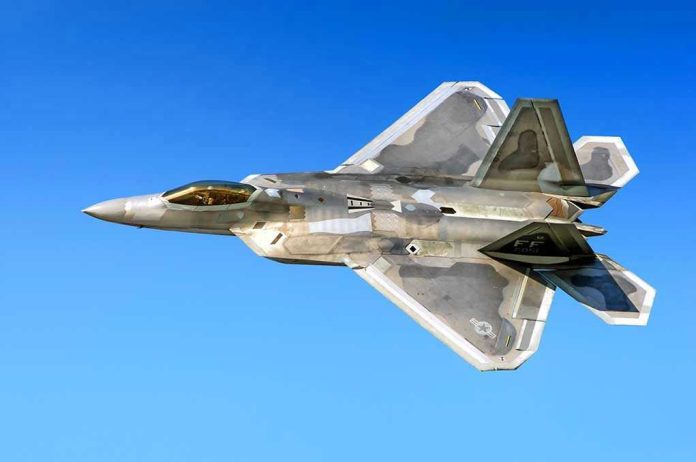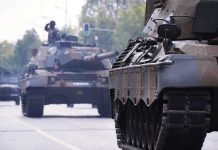
A fireball ripped through the Dubai Air Show, searing a lasting question into the world’s conscience: can a nation’s pride survive the public fall of its most ambitious fighter jet program?
Story Snapshot
- India’s flagship Tejas fighter jet crashed in front of a global audience at the Dubai Air Show, killing Wing Commander Namansh Syal.
- The incident not only claimed a life, but thrust India’s indigenous defense ambitions into the international spotlight for all the wrong reasons.
- This marks the second Tejas crash in less than two years, prompting urgent scrutiny of the aircraft’s safety record.
- The fallout threatens export prospects and forces a reckoning with the risks of military aviation innovation.
A Sudden Catastrophe at the World’s Stage
November 21, 2025, was meant to be a day of demonstration and triumph for the Indian Air Force at Al Maktoum International Airport. Instead, as the Tejas Mk.1 fighter jet streaked through the sky, the world watched in horror as it failed to recover from a negative G-force maneuver. The aircraft plunged rapidly, striking the ground in a fiery explosion that consumed both the plane and the hopes of its pilot, Wing Commander Namansh Syal. This tragedy unfolded live, captured from multiple angles and instantly shared around the globe, amplifying its impact far beyond the air show’s boundaries.
Firefighting and emergency teams converged within moments, but the intensity of the blast and ensuing inferno left little chance for survival. Official statements from the Indian Air Force and HAL, the jet’s manufacturer, confirmed the pilot’s death and announced a formal court of inquiry. The Dubai Air Show pressed on, but the atmosphere was palpably changed, shadowed by the loss and the spectacle of disaster.
Legacy of the Tejas: Triumphs and Tribulations
The Tejas fighter jet was never just another aircraft. Conceived in the 1980s as India’s answer to aging Soviet-era MiGs, it was designed to herald a new era of self-reliance in defense technology. After a tortuous development path plagued by delays and technical challenges, Tejas took its maiden flight in 2001 and formally entered service in 2016. For years, its strong safety record served as a point of national pride, and recent export contracts signaled growing confidence in India’s aerospace engineering prowess.
This crash, however, exposes the program’s vulnerabilities. It comes less than two years after the previous Tejas accident in Rajasthan, where the pilot ejected safely. The back-to-back incidents now raise difficult questions about reliability, especially as India seeks to market the jet abroad. The timing and visibility of the Dubai crash—amid a major international showcase—could not have been more damaging to the brand and its future prospects.
Stakeholders Under Pressure: Safety, Reputation, and Responsibility
Responsibility for the Tejas program rests on several shoulders. The Indian Air Force, tasked with both demonstrating and defending the jet, faces uncomfortable scrutiny over operational risk and pilot safety. HAL, the manufacturer, must now defend not only its engineering but also its vision for indigenous innovation. Dubai Air Show organizers and the UAE Ministry of Defense, while not directly responsible for the aircraft, are nonetheless implicated in the broader issue of event safety and international aviation standards.
Statements from HAL and the IAF offer condolences and promise transparency, but the real test will come in the findings of the court of inquiry. Industry experts caution against knee-jerk conclusions, emphasizing that negative-G maneuvers at low altitude are inherently risky. Yet two crashes in as many years cannot simply be dismissed as bad luck. Potential buyers and defense partners will be watching closely for evidence of systemic issues—and for signs that India can address them forthrightly.
Wider Ramifications: Industry, Politics, and the Human Cost
The loss of Wing Commander Syal reverberates through military and civilian spheres alike. For his family, colleagues, and the broader Indian defense community, the tragedy is deeply personal. For HAL and the IAF, immediate consequences include negative publicity, disrupted export negotiations, and intensified pressure to ensure safety. The Dubai Air Show itself continues, but with heightened scrutiny and a lingering sense of vulnerability that may affect future demonstration protocols.
Economic implications for HAL and Indian defense exports are significant, especially as contracts for nearly a hundred additional Tejas jets hang in the balance. Socially, the crash sparks debate over the risks and rewards of homegrown military technology. Politically, it forces officials to reckon with public demands for transparency and accountability. Globally, the incident prompts other nations to reconsider the challenges of indigenous fighter programs and the dangers of high-stakes military displays.







